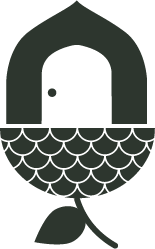Lets Talk About: Physiotherapy & The Menopause
What happens to our muscles, joints, and bone in menopause?
Written by Kate Montgomery and Dionne Ryder of Move and Improve Physiotherapy
It is well known that menopause is when women experience a loss in their hormonal balance. As hormones reduce especially oestrogen, women will experience classical symptoms such as hot flushes but less well known is that there are oestrogen receptors in all our body tissues, including
muscles, joints and bones so a reduction in oestrogen affects a woman’s musculoskeletal-skeletal health too.
We now know the functions of oestrogen are to protect bone health by reducing bone turnover, maintain the inner walls of blood vessels protecting from cardiovascular issues, protect brain function to maintain cognitive ability as well as improve the resilience our musculoskeletal tissues.
Some of the physical effects of oestrogen loss are:
Reduction in muscle mass known as sarcopenia related to age, levels of activity and hormonal changes.
Bone health can be affected with reduced strength leading to osteopenia or osteoporosis.
Tendons can become sensitised and sore (especially those in ankle, elbow shoulders and hip) due to either too much or too little load.
Moods swings are often described ranging from low mood to frustration and anger.
Anxiety levels can increase, and sleep disturbance is commonly described both will upregulate our nervous systems increasing inflammation.
Women notice a change in their body with weight gain especially around the belly.
Motivation to eat healthily, exercise regularly can be especially challenging at this time.
How can physiotherapy help?
As experienced physiotherapists specialising in offering a holistic approach, Kate and Dionne are well placed to support women through this process, explaining symptoms using research-based information and discussing other factors that drive pain such as poor sleep, diet and stress management. We listen carefully to women to offer realistic advice on practical changes aimed at restoring confidence in their body.
Building muscle strength can be done simply from home using targeted body weight muscle strengthening techniques - often approaching a muscle’s underlying strength will settle a sore tendon. Increased muscle activity has a direct effect on improving bone tissue health too. This is particularly important for the women who have been diagnosed with osteopenia or osteoporosis. Women with this condition require a measured approach to regaining some strength and establishing an activity plan.
If you would like to discuss whether you would benefit from being seen by Kate and Dionne please get in touch.






